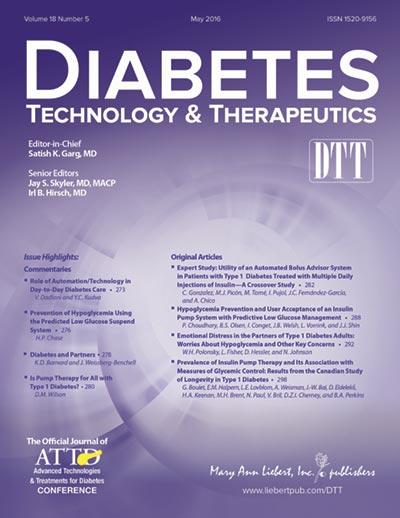A newly published journal article details the success of an overnight closed-loop (OCL) control system, intended to mimic pancreatic beta-cell function, among children with diabetes.
Using an automated insulin feedback controller as part of an overnight closed-loop (OCL) control system improved glucose control (increased time within target glucose range) and reduced episodes of nocturnal hypoglycemia in children and adolescents.
The design and key findings of this study, which are particularly promising because the youngsters were living in the challenging environment of a diabetes camp, are reported in Diabetes Technology & Therapeutics (DTT), a peer-reviewed journal from Mary Ann Liebert, Inc., publishers. The article is available free on the DTT website until July 7, 2016.
Trang Ly, PhD and coauthors from Stanford University School of Medicine (CA), The University of Western Australia (Perth), and Medtronic Minimed (Northridge, CA) assessed the feasibility and effectiveness of the Medtronic Android-based PID-IFB closed-loop blood glucose control system over multiple nights.
The system, intended to mimic pancreatic beta-cell function, includes an insulin pump, glucose sensor, control algorithm housed in an Android phone, and remote monitoring capabilities.
In the article “Automated Overnight Closed-Loop Control Using a Proportional-Integral-Derivative Algorithm with Insulin Feedback in Children and Adolescents with Type 1 Diabetes at Diabetes Camp,” the researchers emphasize that the level of physical activity youngsters typically engage in at diabetes camp can increase the risk for severe nocturnal hypoglycemia.
Continue Reading Below ↓↓↓
“While improving overnight glucose control, the study also found significant reductions in nocturnal hypoglycemia with the use of an automated overnight closed-loop system. This is important step to advancing towards a hybrid and/or full closed-loop system,” says DTT Editor-in-Chief Satish Garg, MD, Professor of Medicine and Pediatrics at the University of Colorado Denver.
Source: Mary Ann Liebert, Inc./Genetic Engineering News
Photo Credit: ©Mary Ann Liebert, Inc., publishers
Journal: Diabetes Technology & Therapeutics










